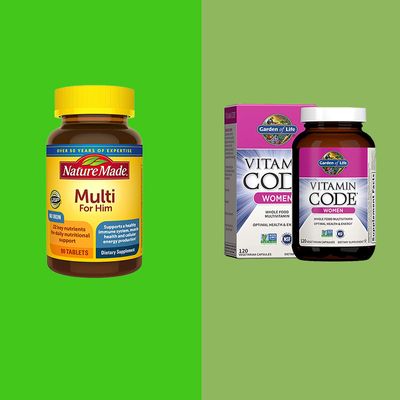
Multivitamins are among the most popular dietary supplements worldwide, with approximately one-third of adults in the United States currently taking them. While these supplements can help fill nutritional gaps, understanding their safety profile, benefits, and potential side effects is crucial for making informed decisions about your health.
Understanding Multivitamins: What the Science Says
According to the National Institutes of Health (NIH), multivitamin/mineral supplements (MVMs) have been available since the 1940s and account for 14% of all supplement purchases in the United States. The supplement industry generated $8.0 billion in MVM sales in 2020 alone.
What Makes a Multivitamin “Healthy”?

A healthy multivitamin should provide essential nutrients at levels that support optimal health without causing adverse effects. The NIH recommends choosing basic multivitamins that contain nutrients at or below the Daily Values (DVs) and Recommended Dietary Allowances (RDAs).
Safety Profile: Which Vitamins Have Minimal Side Effects
The Safest Vitamins for Daily Use
Water-Soluble Vitamins (Lowest Risk):
- Vitamin C: Excess amounts are flushed through urine
- B-Complex Vitamins: Generally safe at recommended doses
- Vitamin B12: Essential for nerve function and red blood cell formation
Fat-Soluble Vitamins (Moderate Risk):
- Vitamin D: Safe at recommended doses (400-800 IU daily)
- Vitamin E: Generally safe under 400 IU daily
- Vitamin K: Safe but can interact with blood thinners

Common Side Effects and How to Avoid Them
Research from Healthline shows that multivitamins providing up to 100% of daily nutritional requirements are generally safe and often free of side effects when taken as directed.
Common but Minor Side Effects:
- Constipation or diarrhea (temporary)
- Upset stomach or nausea
- Metallic taste in mouth
Rare Side Effects:
- Headaches
- Insomnia
- Allergic reactions (very rare)
Essential Vitamins and Their Benefits
Vitamin D: The Sunshine Vitamin

Benefits:
- Supports bone health and calcium absorption
- Boosts immune system function
- May improve mood and cognitive function
Safety: Safe at 400-4,000 IU daily for most adults. Deficiency is common, especially in northern climates.
Vitamin B12: Energy and Nerve Support

Benefits:
- Essential for nerve function and DNA synthesis
- Prevents certain types of anemia
- Supports energy metabolism
Safety: Extremely safe even at high doses. Particularly important for vegetarians and adults over 50.
Vitamin C: Antioxidant Powerhouse
Benefits:
- Powerful antioxidant properties
- Supports immune system function
- Essential for collagen synthesis
Safety: Very safe; excess amounts are excreted through urine. Upper limit is 2,000mg daily.
Best Multivitamin Brands Based on Expert Reviews

Top-Rated Multivitamins for 2024
1. Thorne Basic Nutrients 2/Day
- Third-party tested for purity
- Comprehensive formula with 21 essential vitamins and minerals
- Rated best overall by registered dietitians
2. Garden of Life Organics
- USDA certified organic
- Made from real food sources
- Contains over 17 essential nutrients
3. MegaFood Men’s/Women’s One Daily
- Made with real food and natural ingredients
- Free from synthetic additives
- Third-party tested

Natural vs. Synthetic Vitamins: What the Research Shows
Absorption and Bioavailability
Studies indicate that natural vitamins may be better absorbed than synthetic versions:
- Natural Vitamin E: Absorbed twice as efficiently as synthetic forms
- Natural minerals: Higher bioavailability than synthetic alternatives
- Food-based vitamins: Often contain cofactors that enhance absorption
Making the Right Choice
While natural vitamins may offer superior absorption, synthetic vitamins can still be effective when properly formulated. The key is choosing high-quality products from reputable manufacturers.
Who Should Take Multivitamins?
Recommended Groups
According to NIH guidelines, multivitamins may benefit:
- Women who could become pregnant (for folic acid)
- Pregnant and breastfeeding women
- Adults over 50 (for vitamin B12 and D)
- People with restricted diets (vegetarians, vegans)
- Individuals with malabsorption disorders
Who Should Exercise Caution
Avoid high-dose multivitamins if you:
- Smoke (avoid beta-carotene and vitamin A)
- Take blood thinners (consult about vitamin K)
- Are pregnant (avoid excess vitamin A)
- Have kidney disease (iron and other minerals)
Safety Guidelines and Best Practices
Choosing a Safe Multivitamin
- Look for third-party testing (USP, NSF, or ConsumerLab certification)
- Choose age and gender-specific formulas
- Avoid megadoses exceeding 100% Daily Value
- Check for drug interactions with your healthcare provider
- Consider your diet – you may not need all nutrients
Dosage Recommendations

Safe Daily Limits:
- Vitamin C: Up to 2,000mg
- Vitamin D: 4,000 IU for most adults
- Vitamin B12: No established upper limit
- Vitamin A: 3,000 mcg for adults (10,000 IU)
- Iron: 45mg (avoid if not deficient)
Potential Risks and Drug Interactions
Nutrients of Concern
Fat-soluble vitamins can accumulate and cause toxicity:
- Vitamin A: Can cause liver damage, birth defects
- Vitamin D: Excessive amounts may cause kidney problems
- Vitamin E: High doses may increase bleeding risk
Minerals requiring caution:
- Iron: Can cause constipation, liver damage in excess
- Zinc: May interfere with copper absorption
- Selenium: Toxic at high levels
Drug Interactions
- Vitamin K: Reduces effectiveness of warfarin
- Calcium: Can interfere with certain antibiotics
- Iron: May reduce absorption of some medications
The Bottom Line: Evidence-Based Recommendations

Based on extensive research from the NIH and other authoritative sources, here are the key takeaways:
For Most Healthy Adults:
- A basic multivitamin providing nutrients at or below 100% DV is generally safe
- Focus on nutrients commonly deficient in your diet
- Choose third-party tested products from reputable brands
Red Flags to Avoid:
- Megadose formulations (>100% DV)
- Unverified health claims
- Products without proper labeling
- Supplements claiming to cure diseases
Best Practices:
- Consult healthcare providers before starting any supplement regimen
- Choose age and gender-specific formulations
- Take with food to minimize stomach upset
- Store in cool, dry places away from children
Conclusion
Multivitamins can be a valuable addition to a healthy lifestyle when chosen wisely and used appropriately. The safest options are those that provide essential nutrients at recommended levels without excessive doses. Remember that supplements cannot replace a balanced diet rich in whole foods, but they can help fill nutritional gaps when needed.
Always prioritize quality over quantity, choose third-party tested products, and consult with healthcare professionals to determine if multivitamins are right for your individual needs. With proper selection and use, multivitamins can support your health journey safely and effectively.
Sources:
- National Institutes of Health Office of Dietary Supplements
- Healthline Multivitamin Safety Guide
- Harvard T.H. Chan School of Public Health
- Mayo Clinic Nutrition Guidelines
- U.S. Preventive Services Task Force Recommendations
Disclaimer: This information is for educational purposes only and should not replace professional medical advice. Always consult with a healthcare provider before starting any supplement regimen.



